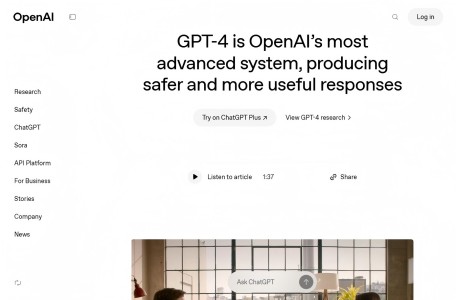
Introduction to GPT-4
GPT-4 (Generative Pre-trained Transformer) is the fourth version in the GPT family of natural language processing models developed by OpenAI. This model relies on a powerful neural network to understand and generate human-like language.
GPT-4 uses a special architecture called “Transformer” to help software understand the meanings of words and how they are combined in sentences. Put simply, the Transformer helps computers figure out how to put all the words together in the correct order to make sense.
The reason for adopting such a method is that this model has been trained on a vast dataset, which includes texts from various sources such as books, articles, and websites. This training enables the GPT-4 model to conduct human-like conversations and generate seemingly meaningful responses. However, although the texts and responses created by GPT-4 seem to be written by humans, it is far from being a conscious intelligence and still has a long way to go to achieve artificial general intelligence.
The Working Principle of GPT-4
GPT-4 works through the same basic process as its predecessor (GPT-3.5), but on a larger scale. The following are its main working principles:
- Transformer Architecture: GPT – 4 is constructed using a design called “Transformer”. These transformers are like super-intelligent machines that can understand which words are important in a sentence and the relationships between them.
- Large-scale Pre-training: GPT – 4 learns from a vast amount of text, such as books, websites, and articles. In this way, it can better understand language patterns, grammar, and facts.
- Fine-tuning: After learning from a large amount of text, GPT – 4 is trained on specific tasks, such as answering questions or understanding the emotions in text. This helps it perform better when handling these tasks.
- Tokenization: GPT – 4 breaks text into smaller parts called “tokens”. These tokens can be words or parts of words, which helps it handle different languages and understand the meanings of words.
- Context Window: GPT – 4 has a limitation on how many tokens it can look at at one time. This limit helps it understand the context and the relationships between words, but it also means that it may not be able to understand very long sentences or paragraphs.
- Probability Distribution and Sampling: When GPT – 4 generates text, it guesses the next word based on how likely it thinks each word is. Then, it picks one of these guesses to create diverse and interesting sentences.
- Fine-grained Control: GPT – 4 can be guided to give specific types of answers or text by using special prompts or adjusting its settings and other techniques, which helps obtain the results we want from the model.
The differences between ChatGPT and GPT-4
ChatGPT and GPT-4 are not the same thing. ChatGPT is based on the GPT-3.5 and GPT-4 models and is specifically designed for conversational artificial intelligence applications, such as generating human-like text responses based on user input.
GPT-4, on the other hand, refers to the current version of the GPT series large language models—the engine that drives ChatGPT.
The output provided by ChatGPT reads more naturally, while GPT-4 is more powerful and can handle more text in terms of input/output.
Similar Sites


Lamini
Gemini 2.0

Sora

Llama 3
DeepSpeed
Gemma

Gen-2

